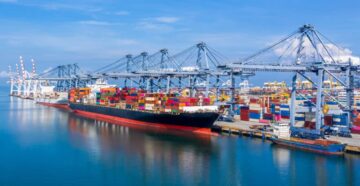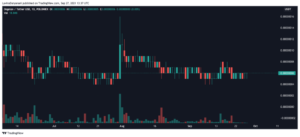
Flexibility, a holistic approach, and the right software platform and services are important factors for resilient supply chain planning.
If 2020 has taught businesses nothing else, it’s taught the importance of resilient planning for supply chains. The supply shock that started in China in February, followed by the demand shock when the global economy shut down, laid bare vulnerabilities in both the production plans and supply chains of businesses all over the world. Weaknesses became apparent with temporary trade restrictions and shortages of critical supplies in pharmaceuticals, medicine, and many other industries.
Add the U.S.-China trade war and a rise in economic nationalism, and manufacturers found themselves under political and competitive pressure to eliminate sources seen as risky, increase domestic production, and contribute to job growth in their home countries.
What’s clear is that every business must have strategies in place to protect itself from global supply chain threats today, and for as long as it plans to stay in business.
5 Supply Chain Strategies to Embrace Today for a Safer Tomorrow
In addition to actions your company is already taking to address and mitigate the disruptions we’ve seen over the past year, your supply chain planning should include strategies that will build resilience and future-proof your long-term business against unforeseen risks. Here are five tips to do just that.
1. Take a comprehensive view to optimize your planning
Your overall business objectives incorporate the big picture, but once goals have been set, strategies must be developed to reach them. This means aligning projects with your overall strategy and taking a comprehensive approach to planning how you’ll meet each goal. Keep in mind that customers are looking for large, stable companies they can rely on to stay in business post-pandemic.
2. Be transparent to meet evolving customer demands and values
COVID-19 has changed everything. Customers now (and likely in the future) are focused on service, safety, and transparency. They also expect product delivery to be both seamless and fast, as well as personalized. In addition, younger customers have stated they will avoid companies that don’t meet their environmental and social values.
Assess your company’s ability to meet these demands. Take an end-to-end look across your supply chain and be prepared to provide documentation of compliance to meet environmental, social and corporate governance responsibilities expected by customers and even potential investors.
3. Diversify your supplier base for resilience
Near-shoring has dominated supply chain strategy since the pandemic. Using sources closer to home provides more control over the supply and helps meet customer demands for speedy delivery. However, the growing demand for socially and environmentally conscious products from companies with the same values also requires companies to examine their entire supply chain to get a better understanding of the entire network, including their vendors’ vendors.
This means considering your suppliers’ proximity to markets, raw material sources, nearness to key suppliers and other partners, labor issues, infrastructure, disruption risk, and regulations, among other issues. Careful examination of the entire supply chain ecosystem will result in more resilient planning, which means disruptions have less impact on your costs and services in the future.
4. Leverage technology
The right supply chain platform can manage the entire product life cycle and simplify the complexities of planning across your entire sourcing landscape today and in the future. You’ll be better able to achieve business goals, manage revenue, and synchronize strategies with tactics to plan across short-, mid- and long-term time horizons.
The best supply chain platforms also provide valuable machine learning-driven insights into demand, inventory, and supply, so you can develop better strategies to evaluate and reduce risk. This will also help you provide consistently high levels of customer service, lower costs, and improve efficiency and productivity, to really drive growth, and improve utilization of assets.
The right supply chain platform can do all of that as well as foster better cooperation with trading partners and provide the transparency today’s customers demand.
5. Optimize your inventory strategy through analysis
The supply side took a big hit during the pandemic, with oversupply in some areas and undersupply in others. Develop an inventory strategy that supports your overall strategy and mitigates risks.
Use current and historical data along with predictions of future disruptions to analyze how much inventory to carry at SKU levels and locations. Be sure your scenario incorporates inventory adjustments for all sorts of possible variables, including demand, supply, lead times for transportation, how often you ship, etc.
Inventory should also be able to automatically rebalance across the company network. Assess your risk and then establish plans for optimized outcomes, keeping in mind the balance between any costs of disruption with the value of assurance and service.
Long-Term Planning for Resilience
Unpredictable as well as predictable disruptive events will continue to challenge our supply chains in the future, but by developing a strategy based on accurate data and intensive analysis, your enterprise will be ready to face these challenges.
Only 21% of respondents to a recent Gartner survey said they have a highly resilient supply network, and more than half said they expect to reach a high level of resilience within the next two or three years. Although resilience comes with additional costs, the cost of doing nothing can be catastrophic.
Empower Strategic Outcomes and Resilient Planning with Logility
Logility combines volumetric and financial analysis with collaborative workflows to create a single, flexible planning and decision support system that changes the game for your organization.
You can drive more accurate and more integrated business planning, demand forecasting, and product life cycle management while improving longer-term predictions for new products, phase-outs, short life cycle products, and promotions. Logility gives businesses the ability to visualize different business scenarios, so they can evaluate risks and opportunities as well as gain new insights that increase the accuracy of demand, inventory, and supply forecasting.

Short bio
As senior vice president of product innovation, Mark is responsible for all product development and technology strategies for the Logility digital supply chain platform. His leadership and creativity are crucial to driving innovation in Logility’s cloud strategy, product architecture, advanced analytics, and mobility. Mark has more than 30 years of experience in development, implementation and support of supply chain software solutions. Mark holds a Bachelor of Science degree in Mathematics from The University of the South (Sewanee) and a Master of Science degree in Operations Research from the Georgia Institute of Technology. He is a frequent guest lecturer for the supply chain management graduate program at the Georgia Institute of Technology. 
Recommended
Source: https://www.logility.com/blog/supply-chains-after-covid-5-tips-for-resilient-planning/
- 2020
- Additional
- All
- among
- analysis
- analytics
- architecture
- Assets
- Big Picture
- Breadcrumbs
- business
- Business Planning
- businesses
- challenge
- China
- Cloud
- Companies
- company
- Container
- continue
- corporate governance
- Costs
- countries
- Covid
- creativity
- Current
- Customer Service
- Customers
- data
- delivery
- deloitte
- Demand
- Demand forecasting
- develop
- Development
- digital
- Disruption
- driving
- Economic
- economy
- ecosystem
- efficiency
- Enterprise
- environmental
- etc
- events
- Face
- FAST
- financial
- Flexibility
- future
- game
- Gartner
- Georgia
- Georgia Institute of Technology
- gif
- Global
- Global economy
- governance
- graduate
- Growing
- Growth
- Guest
- here
- High
- Home
- Horizons
- How
- HTTPS
- Impact
- Including
- Increase
- industries
- Infrastructure
- Innovation
- insights
- inventory
- Investors
- issues
- IT
- Job
- keeping
- Key
- labor
- large
- lead
- Leadership
- lecturer
- Level
- Long
- management
- mark
- Markets
- mathematics
- medicine
- mobility
- network
- new products
- Operations
- Other
- Others
- pandemic
- pharmaceuticals
- picture
- planning
- platform
- Platforms
- post-pandemic
- Predictions
- president
- pressure
- Product
- product development
- Product Innovation
- Production
- productivity
- Products
- Program
- projects
- protect
- Raw
- reduce
- regulations
- research
- revenue
- Risk
- Safety
- Science
- seamless
- Services
- Short
- shortages
- So
- Social
- Software
- software platform
- Solutions
- South
- started
- stay
- Strategy
- suppliers
- supply
- supply chain
- supply chain management
- Supply chains
- support
- Supports
- Survey
- system
- tactics
- Technology
- temporary
- The Future
- threats
- time
- tips
- trade
- Trading
- Transparency
- transportation
- university
- value
- vendors
- Vice President
- View
- war
- within
- world
- year
- years









